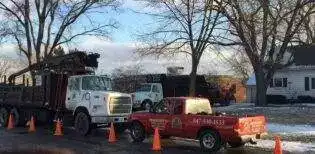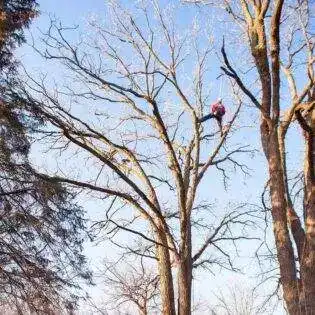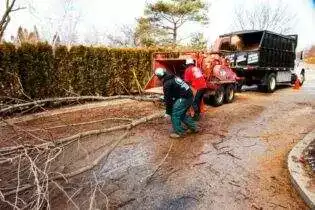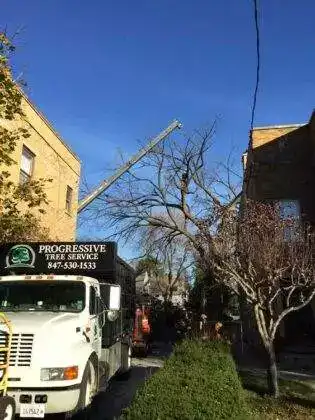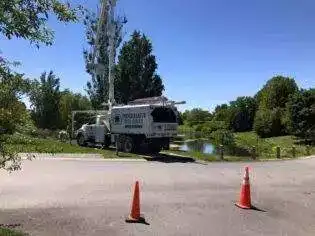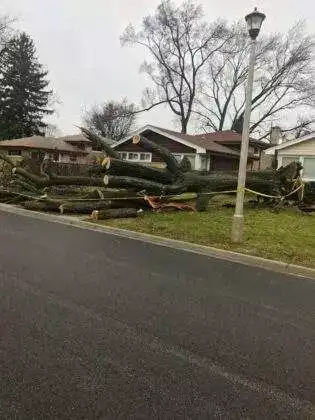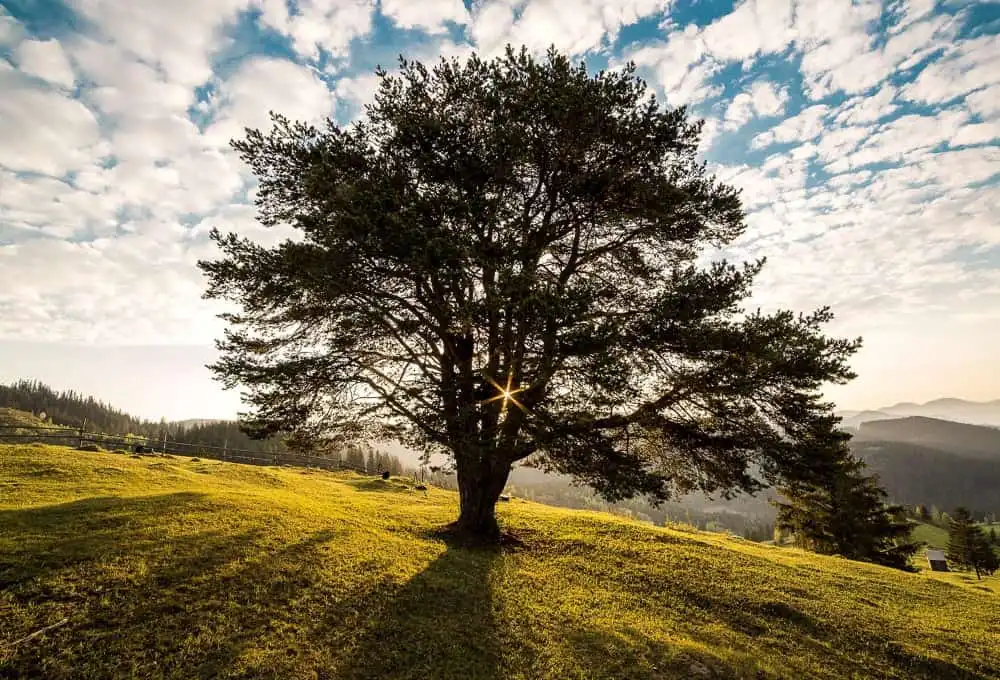What Causes BLS?
Bacterial leaf scorch (BLS) is a chronic disease of shade trees caused by the bacterium Xylella fastidiosa. The bacterium invades the xylem, the tissue responsible for conducting water and nutrients in plants. Therefore, any significant damage to this tissue has devastating consequences to the affected trees.
The disease was first diagnosed in the United States in the early ‘80s and is prevalent in the southeastern states, Texas and Illinois. There have also been a few reported cases in New York.
Xylella fastidiosa may not be a fast-spreading disease, but it’s fatal. The bacterium is spread by xylem feeding insect vectors like leafhoppers, treehoppers, sharpshooters, and spittlebugs. They feed on the succulent, terminal shoots of host trees, picking up the bacterium in the process.
Xylella fastidiosa does not circulate or multiply within the bodies of its vectors. Rather, it waits until it’s lodged in the xylem of a new host, where it will greatly multiply, circulate, and infect other parts of the tree. The bacteria are cold-sensitive; they will overwinter in sheltered areas within the xylem and resume multiplication during the next growing season.
There have also been reports of Xylella fastidiosa spreading between trees through root grafts. Unfortunately, there is no cure for the disease, making it fatal in the long run.
Affected Tree Species
Approximately 17 species of oaks can be affected by the bacterium, making oaks the most susceptible of trees. Most afflicted are the Red oak, White oak, Willow oak, Pin oak, and Bur oak species. Other susceptible trees include Red maple, sugar maple, Sycamore, Almond, Sweetgum, and American elm.
Symptoms of Bacterial Leaf Scorch
Xylella fastidiosa feed on the essential amino acids and other compounds present in xylem fluid. The growing population of bacteria damages the xylem tissue, restricting the availability of water to the leaves and causing bacterial leaf scorch.
The most noticeable symptom of the disease is the premature browning of leaves in mid-summer. First to be affected are the older leaves. As summer moves towards fall, the browning spreads outwards to the younger leaves on the branch tips. There is usually a narrow yellow border separating the browned areas of affected leaves from green tissue. Affected leaves may fall off.
Leaves will grow normally in the following year, but symptom expression will begin as summer progresses. Premature leaf browning will be present in previously affected limbs plus on a few more branches. As the years progress, more leaves on more branches become affected until the entire tree browns prematurely after around eight years.
Browning causes less chlorophyll on the leaves. Chlorophyll is the green pigment responsible for absorbing light energy from the sun and is crucial for photosynthesis. With the gradual decline of green, chlorophyll producing leaves, affected trees gradually synthesize fewer nutrients. As a result, the tree slowly dies from the twigs to branches, and eventually, the entire tree.
The best time to detect bacterial leaf scorch is during late summer and fall. You will need the help of a professional arborist because leaf disorders are not necessarily a sign of leaf scorch. They can be caused by drought, fungal pathogens, root damage, and road salt, among others.
It's may not be easy for the average person to notice bacterial leaf scorch, but if you’re keen enough, this is how to differentiate leaf damage from BLS and that caused by other factors;
- In BLS, leaf browning starts at the leaf edges and works towards the middle. Other pathogens like Dutch elm and Oak wilt cause a more overall and uniform browning. The same applies to browning from drought and other environmental stress.
- There is usually a yellow border separating the browned from the green parts of a leaf.
- Bacterial leaf scorch manifests as a cycle, which worsens over a long period.
A good arborist will be able to tell for sure whether your tree’s symptoms are due to Xylella fastidiosa or other factors.
A laboratory analysis is also necessary to confirm the diagnosis of leaf scorch.
Bacterial Leaf Scorch damage if left untreated??
Although BLS eventually kills the tree, leaving the disease untreated accelerates this process.
Prevention and Treatment
Bacterial leaf scorch has no treatment, but it can be managed to maintain the tree’s aesthetic and keep it alive for as long as possible. Management practices include;
- Routine removal of branches that have died from bacterial leaf scorch.
- Supplying adequate water to the infected tree since dry conditions help accelerate the condition.
- Treatment with antibiotics.
Once the tree dies, it should be replaced with tree species not susceptible to bacterial leaf scorch.
Final Take
Bacterial leaf scorch is chronic, and although fatal, can be managed to maintain plant vigor and help the infected tree survive longer. The sooner the diagnosis, the better for your tree; so, call us today for a BLScheck-up.
